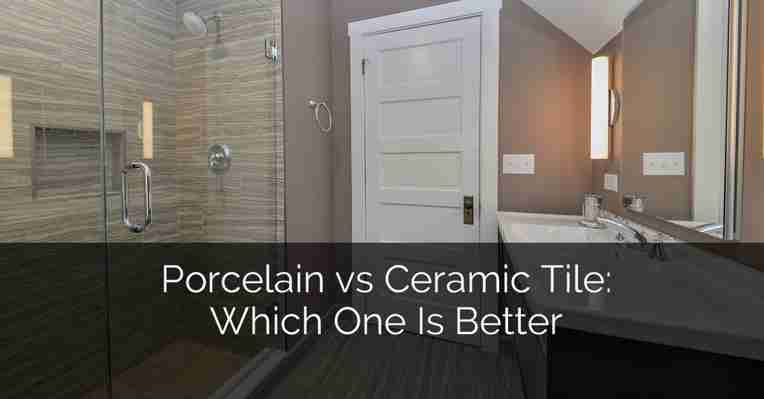Ceramic Tiles

A ceramic tiler will tell you ceramic tiles are known to be very versatile in nature and can be used in a wide range of environments without having to worry about it being affected with stains, water, and the like. However, for areas where a hard tile surface mush be covered, there’s a risk that it would be not suitable for specific situations as well as certain locations.
Advantages of Using Ceramic Tiles
Unglazed Ceramic
This type of ceramic tile from a ceramic tile company must be sealed as a way to protect the surface against and form of liquids from penetrating. Also, the grout lines in between these tiles should be protected because they become susceptible to moisture and that’s why thorough sealing is a must. If done improperly, mold can grow between the tiles and this would lead to bigger problems.
Ceramic Water Resistance
The good thing about glazed ceramic tiles is the fact that they contain a protective layer that rests over the tiles. This makes the ceramic tile impervious against stain, as well as water penetration. Aside from that, ceramic tiles can also withstand high levels of humidity. These are just some of the properties that make ceramic tiles perfect for kitchens and bathrooms.
Ceramic Tile Design Options
Modern manufacturing techniques are one of the benefits that you can enjoy from using ceramic tiles, because you’ll have the privilege of printing the material in several ways. For instance, solid tiles could be mixed and matched in patterns that reflect your personality or the theme of your home. Likewise, they can also be printed in a way where it would look fabulous on hardwood and stones. Lastly, ceramic tiles could be cut and shaped into rectangles, triangles, and even planks.
Ceramic
Tile Maintenance
Ceramic tiles are very easy to maintain and take care of. Liquid, dirt, and stains are only on the surface and could be mopped away easily. Also, regular maintenance is usually comprised of vacuuming and sweeping using a soft brush.
Durable Ceramic Tile
These are extremely tough tiles and almost impossible to crack no matter how hard you try, unless you’re going to use equipment made specifically for that purpose. A quality installation could last for several decades, especially if it’s properly maintained.
Allergen Concerns
Ceramic tiles are best known for its solid, hard surface. That’s why it’s highly resistant against pollen, dust, and other types of allergens. Once these small particles land on a ceramic floor, they don’t penetrate the surface, which means wiping them using a sponge or a mop. This can also help in keeping the air free from any forms of irritants.
Ceramic Tile Flooring Costs
Most ceramic tiles cost between $5-$10 per square foot, the price usually depends on the quality of the tiles you’re going to get. That’s one of the reasons why ceramic tiles are a little expensive for some people. However, depending on where they are installed, ceramic tiles could add a trmendous value to your property for resale purposes.
Drawbacks of Ceramic Tiles
Difficult to Clean
Since ceramic tiles are very hard, cleaning and maintaining them can be cumbersome. Also, it becomes difficult to stand on ceramic tiles as well. Though, the hardness can easily be resolved by using area rugs and throw rugs, placing them in strategic locations where people must stay on them for longer periods of time, like in front of a kitchen sink.
Weight
Just like porcelain tiles, ceramic tiles can also be quite heavy and that’s why they’re not ideal for upper story installations as well. In case you have decided to install ceramic tiles on the upper level of the building, perform some professional checks first to ensure that you’re not putting a lot of stress on floor joists below.
Get Prepared Before Going to the Tile Store
So, you are familiar with the basics by now, especially if you have read the previous parts carefully. Upon your visit to the tile store, don’t forget to bring a small shard of window glass, pocket knife, copper penny, and tap water in a bottle of drinking water. This would help you test each tile and see if they are really durable or not.
Also, because the tile has been labeled as ‘porcelain,’ it doesn’t mean it’s more durable, better, harder, and scratch resistant. Basically, you’ll always get what you have paid for. However, if the salesperson would try to lure you to “upgrade” to a more expensive type of porcelain tile, decline the offer. Believe it or not, there aren’t any much more practical difference between porcelain and ceramic tiles.
As for ceramic tiles, just like what has been discussed earlier, they are subjected to a lot of tests, such as resistance to heat and cold, chemical damage, slipperiness, breaking strength, stain resistance, and many more. For the water resistance test, it’s usually described using PEI and ANSI to see how much moisture is in the tile. Though these distinctions don’t usually mean that one tile is better than the other, it’s just useful to determine how and where the tile should be used.
Our Final Thoughts
When choosing a tile, it’s important to choose one that doesn’t only look good and fits your style. It should also be capable of withstanding the test of time. For those who are going to tile their kitchen and have children or dogs around the house, then porcelain tiles would be better because they offer extra durability. On the other hand, if you’re going to renovate a bathroom, then you can either use porcelain or ceramic depending on your preference.
Happy tile hunting! We’d be glad to know what works out for you, and don’t forget to leave a comment below and share your insights with us.








